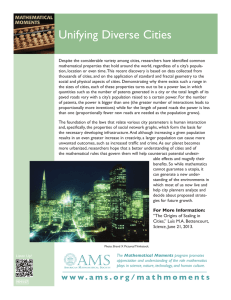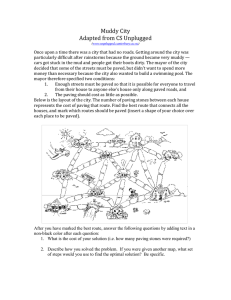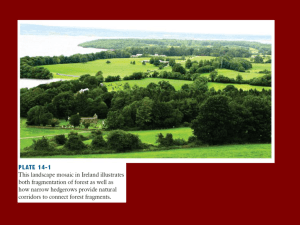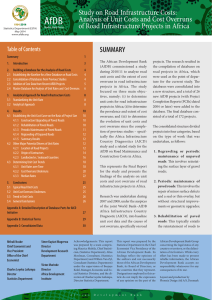BHCSI Data Structures & Algorithms Program 7: Pavement Assigned: 7/19/04 (Monday)
advertisement
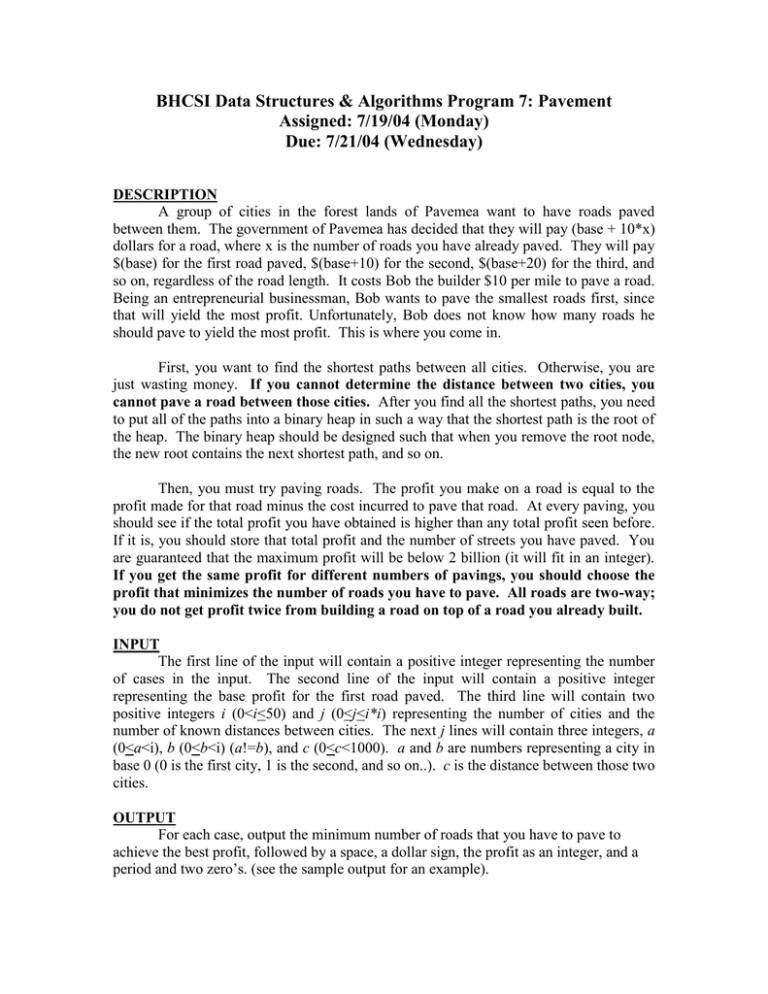
BHCSI Data Structures & Algorithms Program 7: Pavement Assigned: 7/19/04 (Monday) Due: 7/21/04 (Wednesday) DESCRIPTION A group of cities in the forest lands of Pavemea want to have roads paved between them. The government of Pavemea has decided that they will pay (base + 10*x) dollars for a road, where x is the number of roads you have already paved. They will pay $(base) for the first road paved, $(base+10) for the second, $(base+20) for the third, and so on, regardless of the road length. It costs Bob the builder $10 per mile to pave a road. Being an entrepreneurial businessman, Bob wants to pave the smallest roads first, since that will yield the most profit. Unfortunately, Bob does not know how many roads he should pave to yield the most profit. This is where you come in. First, you want to find the shortest paths between all cities. Otherwise, you are just wasting money. If you cannot determine the distance between two cities, you cannot pave a road between those cities. After you find all the shortest paths, you need to put all of the paths into a binary heap in such a way that the shortest path is the root of the heap. The binary heap should be designed such that when you remove the root node, the new root contains the next shortest path, and so on. Then, you must try paving roads. The profit you make on a road is equal to the profit made for that road minus the cost incurred to pave that road. At every paving, you should see if the total profit you have obtained is higher than any total profit seen before. If it is, you should store that total profit and the number of streets you have paved. You are guaranteed that the maximum profit will be below 2 billion (it will fit in an integer). If you get the same profit for different numbers of pavings, you should choose the profit that minimizes the number of roads you have to pave. All roads are two-way; you do not get profit twice from building a road on top of a road you already built. INPUT The first line of the input will contain a positive integer representing the number of cases in the input. The second line of the input will contain a positive integer representing the base profit for the first road paved. The third line will contain two positive integers i (0<i<50) and j (0<j<i*i) representing the number of cities and the number of known distances between cities. The next j lines will contain three integers, a (0<a<i), b (0<b<i) (a!=b), and c (0<c<1000). a and b are numbers representing a city in base 0 (0 is the first city, 1 is the second, and so on..). c is the distance between those two cities. OUTPUT For each case, output the minimum number of roads that you have to pave to achieve the best profit, followed by a space, a dollar sign, the profit as an integer, and a period and two zero’s. (see the sample output for an example). SAMPLE INPUT 4 0 44 011 121 231 0 3 900 10 54 1 3 10 305 247 0 2 100 100 54 1 3 10 305 247 0 2 100 1000 54 1 3 10 305 247 0 2 100 SAMPLE OUTPUT 6 $50.00 0 $0.00 3 $110.00 5 $3730.00
